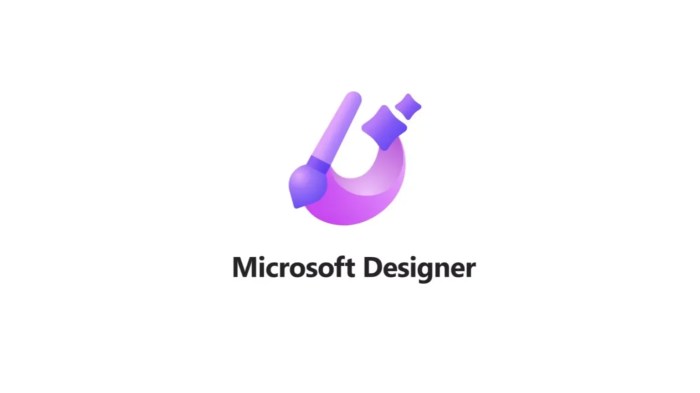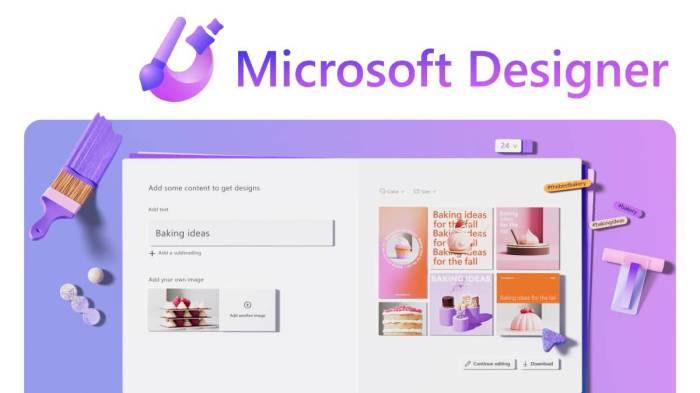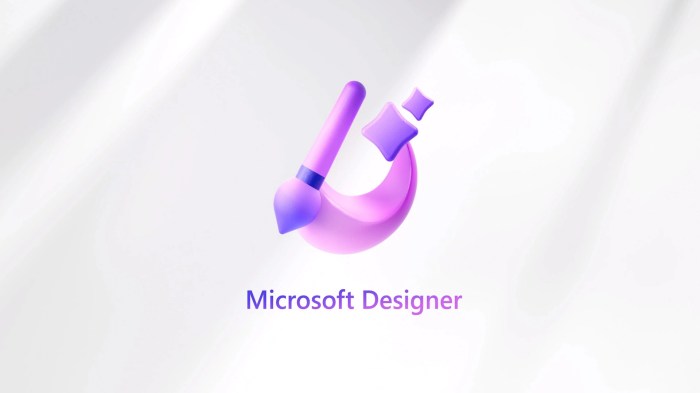Exploring the World of Microsoft Designer
With Microsoft Designer taking center stage, this paragraph sets the scene for an exciting journey into the realm of design, sparking curiosity and inviting readers to delve into a narrative filled with unexpected revelations and insights.
The following paragraph will offer detailed and informative content on the Artikeld topic.
Overview of Microsoft Designer

Microsoft Designer plays a crucial role in software development by designing user interfaces and experiences for various Microsoft products. They are responsible for creating visually appealing and user-friendly designs that enhance the overall user experience.
Role and Responsibilities
- Collaborating with product managers and developers to understand project requirements
- Creating wireframes, mockups, and prototypes for software applications
- Conducting user research and usability testing to gather feedback
- Ensuring consistency in design across all Microsoft products
Key Skills and Qualifications
- Proficiency in design tools such as Adobe Creative Suite, Sketch, or Figma
- Strong understanding of user-centered design principles
- Excellent communication and collaboration skills
- Bachelor's degree in design, computer science, or related field
Importance in Software Development
Microsoft Designers play a critical role in shaping the overall look and feel of Microsoft products. Their designs not only impact the user experience but also contribute to the success and adoption of software applications. By focusing on usability and aesthetics, Microsoft Designers help create intuitive and visually appealing interfaces that enhance user satisfaction and engagement.
Tools and Software Skills

Microsoft Designers need to be proficient in a variety of tools and software to excel in their role. These skills are essential for creating visually appealing designs and effectively communicating ideas to clients and colleagues.
Essential Tools and Software
- Adobe Creative Suite: Microsoft Designers should be well-versed in software like Adobe Photoshop, Illustrator, and InDesign for creating graphics, illustrations, and layouts.
- Microsoft Office Suite: Proficiency in Microsoft Word, PowerPoint, and Excel is crucial for creating presentations, documents, and spreadsheets.
- Sketch: This design tool is popular for creating user interfaces and digital designs, making it a valuable addition to a Microsoft Designer's skill set.
Comparison of Microsoft Design Software Applications
- Microsoft Visio: Ideal for creating diagrams and flowcharts, Visio offers a wide range of shapes and templates for visualizing processes and systems.
- Microsoft Publisher: This desktop publishing software is great for creating marketing materials, such as brochures, newsletters, and flyers, with its user-friendly interface.
- Microsoft Paint 3D: With the ability to create 3D models and designs, Paint 3D is a versatile tool for adding depth and dimension to projects.
Integration with Other Design Tools
Microsoft Designers often need to collaborate with professionals who use different design tools. To streamline this process, Microsoft Designer can integrate with various tools like Adobe Creative Cloud and Sketch through plugins and file compatibility. This ensures a seamless workflow and allows for efficient collaboration on design projects.
User Interface (UI) Design
User Interface (UI) design plays a crucial role in Microsoft products as it directly impacts the user experience and usability of the software. A well-designed UI can enhance user interaction, improve navigation, and increase overall satisfaction with the product.
Significance of UI Design in Microsoft Products
UI design in Microsoft products is essential for creating intuitive interfaces that are visually appealing and easy to use. It helps users navigate through the software seamlessly, find features quickly, and perform tasks efficiently. A good UI design can also reflect the brand's identity and establish a consistent look and feel across different products.
Examples of Effective UI Designs by Microsoft Designers
- Microsoft Office Suite: The ribbon interface introduced in Microsoft Office revolutionized the way users access tools and features, making them more accessible and organized.
- Windows Operating System: The Start menu in Windows provides a central hub for accessing applications and settings, simplifying the user experience.
Principles of UI Design Followed by Microsoft Designers
- Consistency: Maintaining a consistent design language across all products to ensure a seamless user experience.
- Accessibility: Designing interfaces that are easy to navigate and understand for users of all abilities.
- Feedback: Providing clear feedback to users when they interact with elements to communicate actions or errors effectively.
- Simplicity: Keeping interfaces simple and clutter-free to reduce cognitive load and improve usability.
User Experience (UX) Design

User Experience (UX) Design plays a crucial role in Microsoft products, ensuring that users have a seamless and intuitive interaction with the software. Microsoft Designers focus on creating designs that prioritize the user's needs, preferences, and overall satisfaction.
Enhancing User Experience
Microsoft Designers enhance user experience by incorporating user-centered design principles into their work. They conduct thorough research to understand the target audience, their behaviors, and pain points. By creating user personas and conducting usability testing, designers can tailor the product to meet the specific needs of the users.
This results in a more engaging and user-friendly experience.
User Research Process
Microsoft Designers follow a structured user research process to gather insights and feedback from users. This process involves conducting surveys, interviews, and usability tests to understand how users interact with the product. By analyzing this data, designers can identify areas for improvement and make informed design decisions.
This iterative approach ensures that the final product meets the needs and expectations of the users.
Collaboration and Communication
Collaboration and communication are essential aspects of a Microsoft Designer's role. They work closely with cross-functional teams to create cohesive designs that meet the needs of users and stakeholders. Effective communication strategies are key in ensuring that everyone is aligned and working towards a common goal.
Collaboration with Cross-Functional Teams
Microsoft Designers collaborate with a variety of teams, including developers, product managers, marketers, and researchers. By working together, they can incorporate different perspectives and expertise into their designs, resulting in more innovative and user-friendly products.
- Regular meetings and check-ins to discuss progress and address any issues.
- Creating design systems and guidelines to ensure consistency across teams and projects.
- Seeking feedback and input from team members to incorporate diverse ideas and viewpoints.
Effective Communication Strategies
Communication skills are crucial for Microsoft Designers to convey their ideas clearly, gather feedback, and collaborate effectively with others. Some effective communication strategies include:
- Active listening to understand the needs and perspectives of team members.
- Using visual aids such as wireframes, prototypes, and design mockups to communicate design concepts.
- Providing clear and constructive feedback to team members to drive continuous improvement.
Importance of Communication Skills
Effective communication skills are vital for Microsoft Designers to ensure that their design vision is understood and implemented correctly. By fostering open communication and collaboration within cross-functional teams, designers can create successful products that meet user needs and business goals.
Last Point
In conclusion, this exploration has shed light on the multifaceted role of Microsoft Designers, highlighting their crucial impact on the world of software design.
FAQ Explained
What are the key skills required to become a Microsoft Designer?
Key skills include proficiency in design software, strong communication abilities, and a solid understanding of user experience principles.
How do Microsoft Designers collaborate with cross-functional teams?
Microsoft Designers collaborate by integrating design perspectives with technical and business requirements to create cohesive solutions.
Why is UI design significant in Microsoft products?
UI design is crucial in Microsoft products as it enhances user interaction, navigation, and overall user experience.
What tools should Microsoft Designers be proficient in?
Microsoft Designers should be proficient in tools like Adobe Creative Suite, Sketch, and prototyping tools like InVision.
How do Microsoft Designers enhance user experience through design?
They enhance user experience by understanding user needs, conducting research, and creating intuitive design solutions that address those needs.




